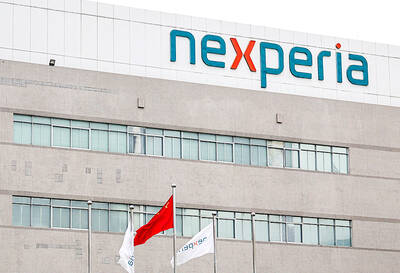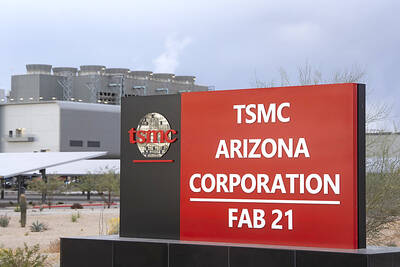Oil prices rose on Friday on the possibility that the International Atomic Energy Agency (IAEA) will refer Iran to the UN Security Council over its nuclear program.
Price gains were limited, though, as the US has said it is not now seeking sanctions against Iran, OPEC's second-largest oil producer. The IAEA board adjourned until yesterday morning without reaching a consensus.
Light, sweet crude for March delivery rose US$0.69 to US$65.37 a barrel on the New York Mercantile Exchange, after sinking to as low as US$63.95 earlier in the day. The contract had dropped US$1.88 a barrel on Thursday.
March Brent futures rose US$0.51 to settle at US$63.39 a barrel on London's ICE Futures exchange.
"The market is uncertain as to what it wants to do at this point. Supply is not the issue," Alaron Trading Corp analyst Phil Flynn said, referring to ample US crude and product inventories.
"The uncertainty about Iran is the issue," Flynn said.
Participants on both sides in the IAEA meeting have said referring Iran to the UN body seemed unavoidable. The UN Security Council could impose sanctions if the agency reports Iran. Even though Iran's oil minister Kazem Vaziri Hamaneh has said Iran won't link the country's oil exports to its nuclear dispute, analysts say the issue is nevertheless a factor in the energy markets.
"Iran needs the money, and the world needs the oil," Flynn said, but any sanction against the country "would increase the anxiety and definitely increase the risk in holding futures."
Heating oil rose more than a US$0.01 to settle at US$1.7816 a gallon (US$0.47 per liter) on the NYMEX, while gasoline gained more than US$0.01 to settle at US$1.6817 a gallon. Natural gas rose US$0.266 to settle at US$8.613 per million British thermal units.
Iran claims its program is peaceful and aimed only at generating electricity, while the US and some European nations fear it could be used to develop weapons.

JITTERS: Nexperia has a 20 percent market share for chips powering simpler features such as window controls, and changing supply chains could take years European carmakers are looking into ways to scratch components made with parts from China, spooked by deepening geopolitical spats playing out through chipmaker Nexperia BV and Beijing’s export controls on rare earths. To protect operations from trade ructions, several automakers are pushing major suppliers to find permanent alternatives to Chinese semiconductors, people familiar with the matter said. The industry is considering broader changes to its supply chain to adapt to shifting geopolitics, Europe’s main suppliers lobby CLEPA head Matthias Zink said. “We had some indications already — questions like: ‘How can you supply me without this dependency on China?’” Zink, who also

Taiwan Semiconductor Manufacturing Co (TSMC, 台積電) received about NT$147 billion (US$4.71 billion) in subsidies from the US, Japanese, German and Chinese governments over the past two years for its global expansion. Financial data compiled by the world’s largest contract chipmaker showed the company secured NT$4.77 billion in subsidies from the governments in the third quarter, bringing the total for the first three quarters of the year to about NT$71.9 billion. Along with the NT$75.16 billion in financial aid TSMC received last year, the chipmaker obtained NT$147 billion in subsidies in almost two years, the data showed. The subsidies received by its subsidiaries —

At least US$50 million for the freedom of an Emirati sheikh: That is the king’s ransom paid two weeks ago to militants linked to al-Qaeda who are pushing to topple the Malian government and impose Islamic law. Alongside a crippling fuel blockade, the Group for the Support of Islam and Muslims (JNIM) has made kidnapping wealthy foreigners for a ransom a pillar of its strategy of “economic jihad.” Its goal: Oust the junta, which has struggled to contain Mali’s decade-long insurgency since taking power following back-to-back coups in 2020 and 2021, by scaring away investors and paralyzing the west African country’s economy.

The number of Taiwanese working in the US rose to a record high of 137,000 last year, driven largely by Taiwan Semiconductor Manufacturing Co’s (TSMC, 台積電) rapid overseas expansion, according to government data released yesterday. A total of 666,000 Taiwanese nationals were employed abroad last year, an increase of 45,000 from 2023 and the highest level since the COVID-19 pandemic, data from the Directorate-General of Budget, Accounting and Statistics (DGBAS) showed. Overseas employment had steadily increased between 2009 and 2019, peaking at 739,000, before plunging to 319,000 in 2021 amid US-China trade tensions, global supply chain shifts, reshoring by Taiwanese companies and